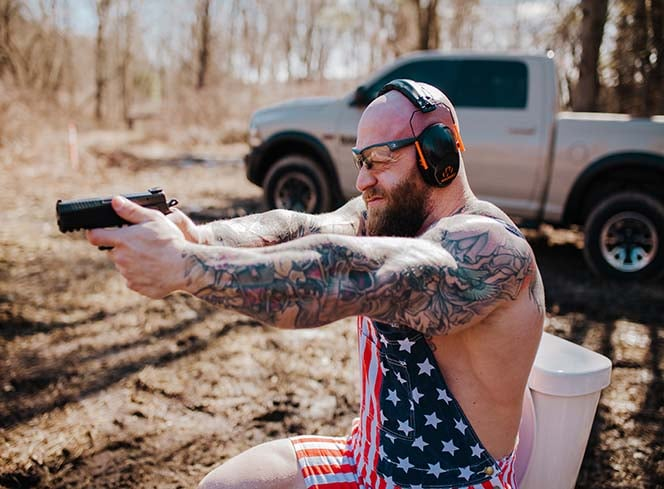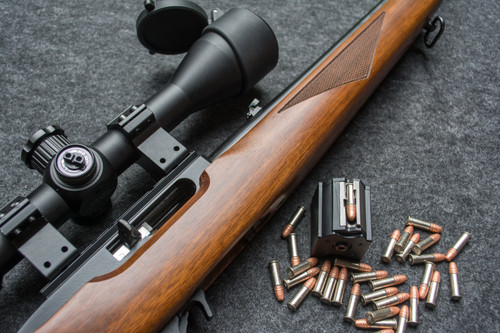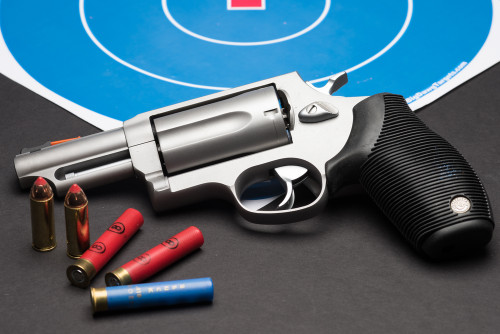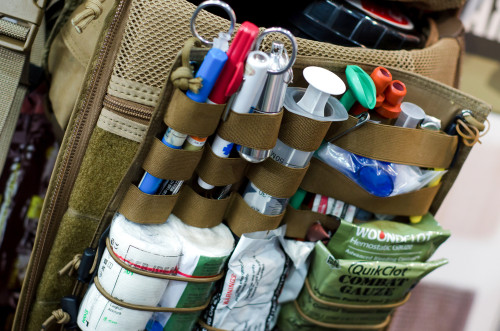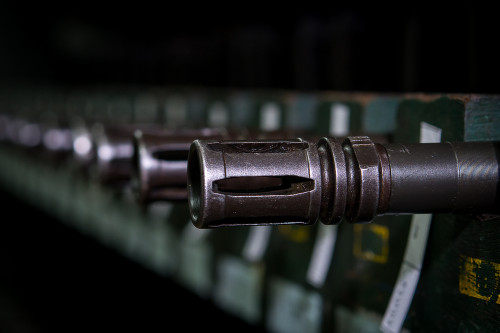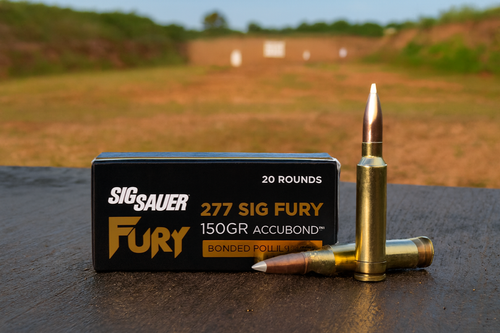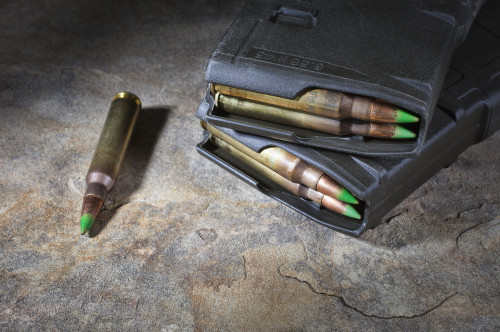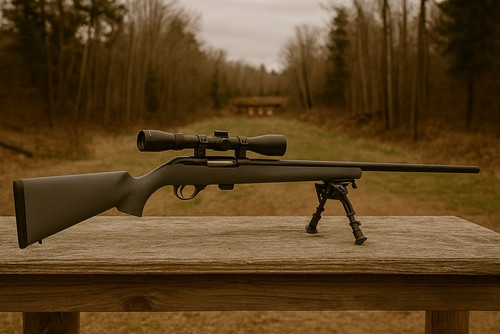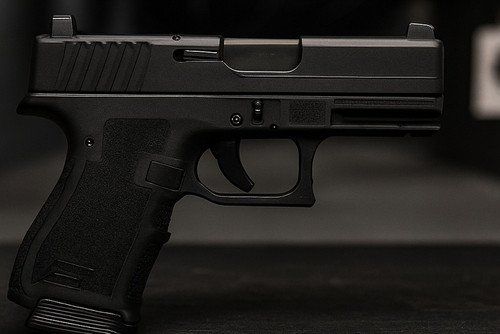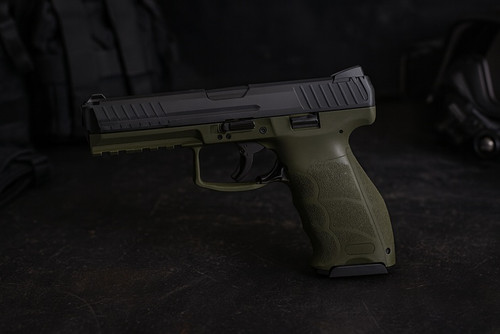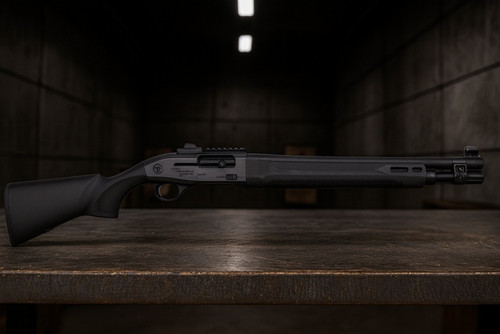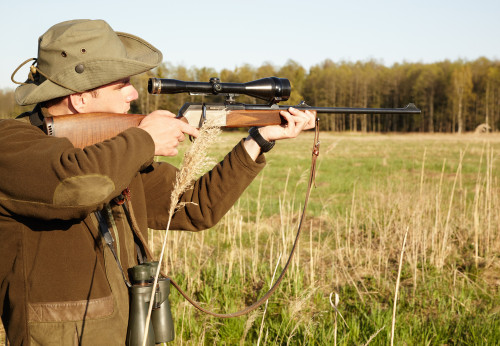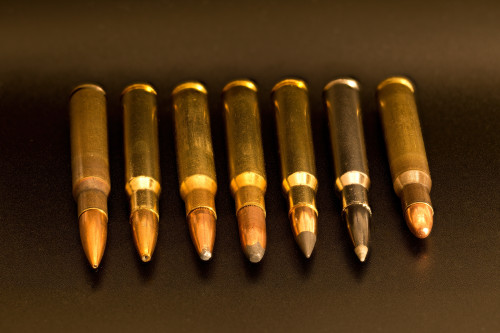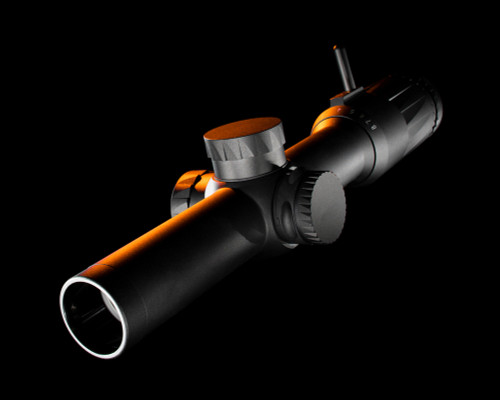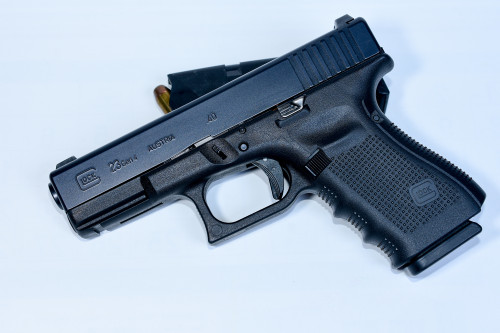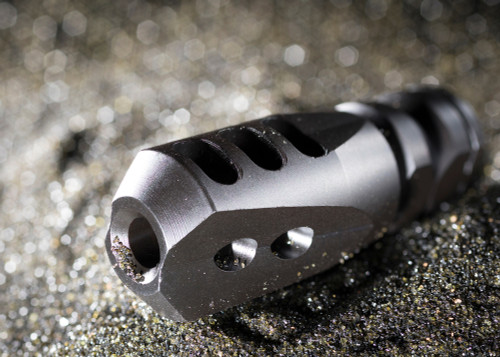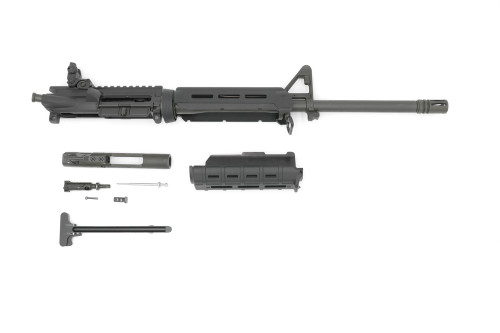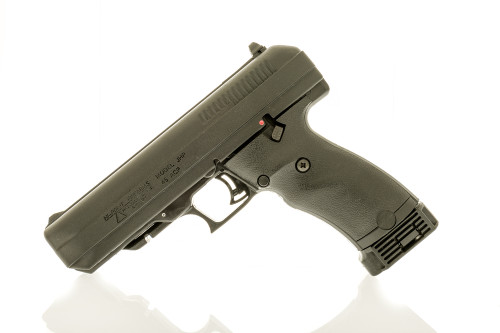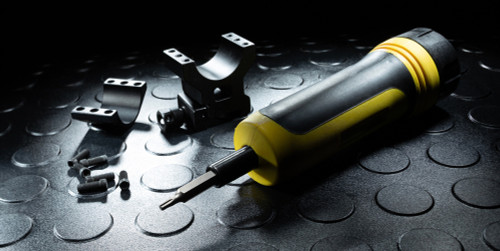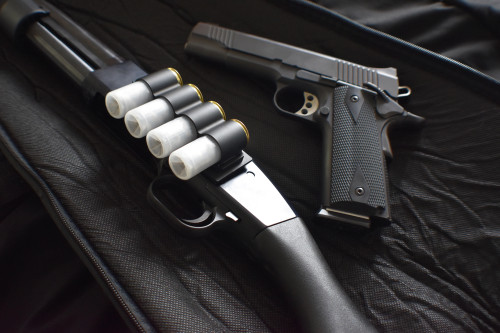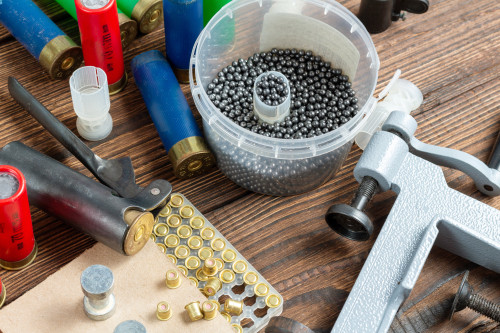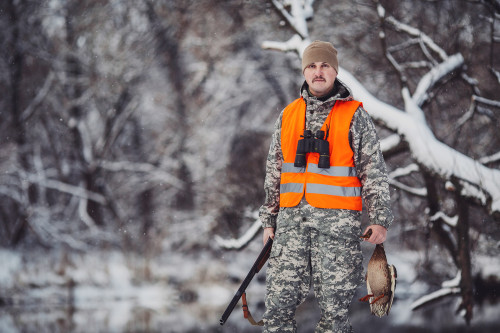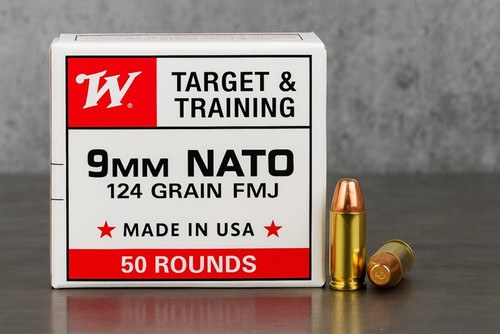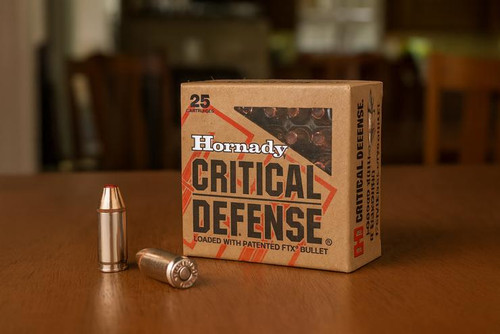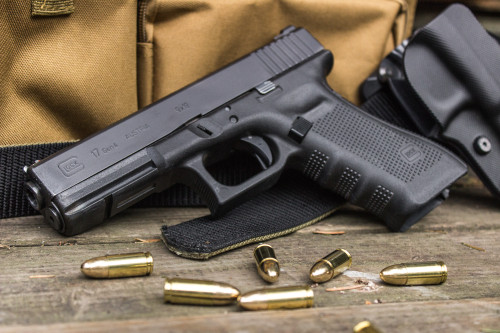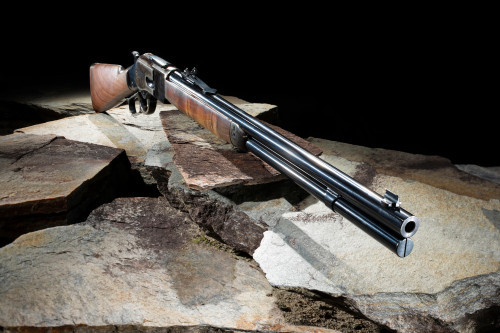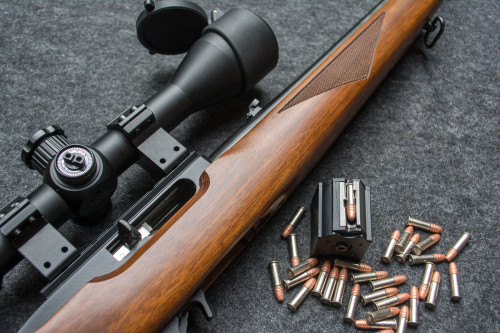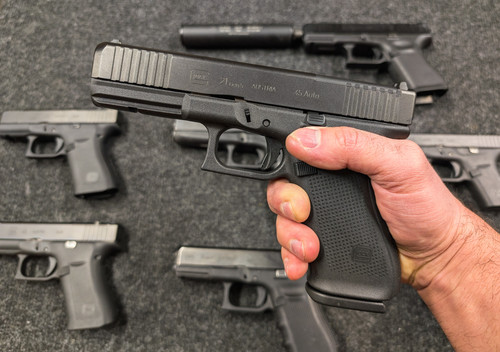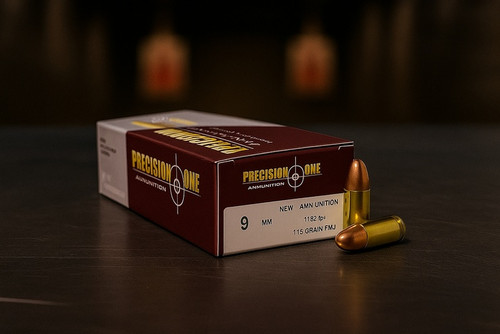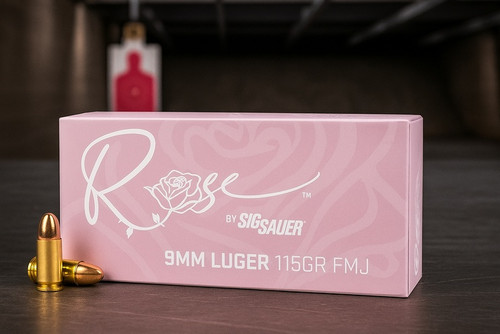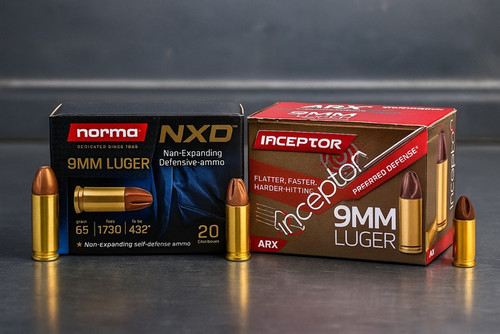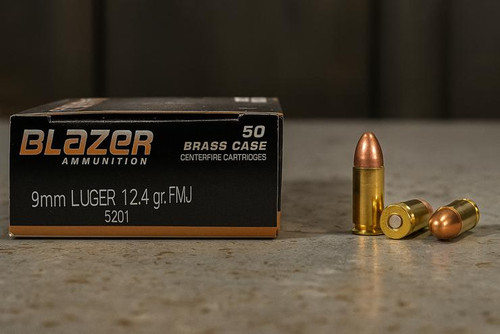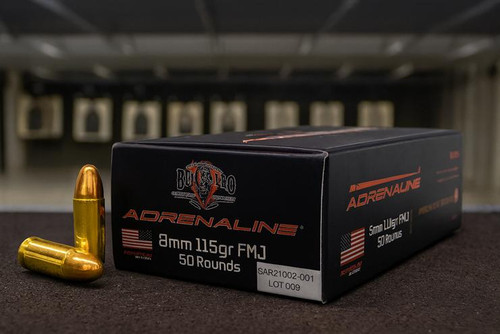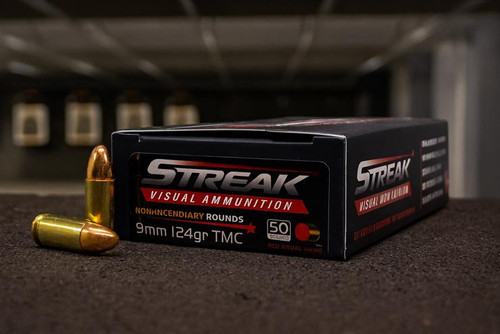We talk a lot about guns because your life may someday depend on them. But hopefully you never will. Here, we’re going to look at a different tool with plenty of everyday applications, both defensive and utilitarian: the knife.
Whether you’re opening a cardboard box, cutting a piece of paracord, or opening the packaging for your newest Glock mag, the knife is an everyday tool. An everyday carry (EDC) knife needs to be high quality, combining ergonomics and functionality into a cohesive design. It also needs to be legal to carry.
Much like choosing between an AK or an AR, your choice of an EDC knife also reflects your personal style.
Are you looking for an EDC knife, but unsure how to start? We’ve got you covered. Let’s take a look at the 8 best EDC knives on the market today.
Overview of Popular EDC Knife Brands
While you don’t want to shop for a knife based exclusively on its manufacturer (don’t be a brand fanboy), it’ll definitely play a factor. Here are some brands to look out for:
Kershaw
For a good blade at a great price, Kershaw is the way to go. Founded in Oregon in the 1970s, Kershaw produces EDC, tactical, and kitchen knives. Kershaw knives are mostly built in the US, but some come from China. Regardless, they’re a great bang for your buck, and a great choice for everyone from workers to collectors.
Invented by Ken Onion, a renowned custom knife maker, Kershaw’s proprietary SpeedSafe system provides lightning-fast blade deployment. Unlike many opening systems, SpeedSafe isn’t legally considered an automatic opener, so the knives are legal nationwide.
Buck
Along with Gerber, Buck is one of the best-known knife brands in the world today. Founded by blacksmith’s apprentice Hoyt Buck in 1902, this company invented the folding lockback knife. They’re still a heavyweight in the industry, and like Kershaw, offer great quality for their prices.
Buck knives aren’t kitchenware. Rather, they are for hunting, combat, and other backcountry applications. In fact, Buck supplied combat knives to US troops during the Second World War. In 1964, the company released the model 110, one of the most iconic folding knives of all time.
Gerber
Like Buck, Gerber is one of the most recognized knife brands in the world. Bladesmith Joseph R. Gerber launched the Gerber Legendary Knives in 1939, and the company continues to expand its presence.
Along with knives, Gerber produces multi-tools, hatchets, machetes, and more. If you use a tool to cut something in the backcountry, Gerber makes it. In addition, their lifetime warranty means you’ve got a blade for life.
CRKT (Columbia River Knife & Tool)
CRKT (short for Columbia River Knife & Tool) is a new kid on the block in the knife world. But it still boasts some brand significance, as it was founded in 1994 by former Kershaw employees Rod Bremer and Paul Gillespi. The company got its big break in 1997 when its KISS (Keep it Super Simple) model hit the scene.
While CRKT is based in Oregon, its production strictly happens overseas, but it works primarily with American designers like Ken Onion and Ed Halliganto crafting its blades. Today they offer a diverse array of quality knives for hunting, fishing, tactical, and survival applications.
SOG
SOG is short for Studies and Observations Group, a name inspired by the legendary Vietnam-era special forces group MACV-SOG. The unit was well-known for its asymmetrical warfare tactics, and members were identified by their distinctive weapons: the SOG Bowie Knife. Spencer Frasier, a UCLA-trained industrial designer, borrowed the name when he founded his knife company.
SOG historically made only combat and tactical knives. But today, they’re appealing to a wider market with more utility knives and knives made entirely from carbon fiber.
Benchmade
Benchmade is another relative newcomer to the knife game. But it’s already set a new standard for blade quality, with a reputation for the best quality control in the industry. The company claims its “3 Ms” set it apart: materials, mechanisms, and manufacturing.
Benchmade is a step above the other companies we’ve mentioned here in quality. But you pay for what you get, and these blades fetch a higher price than Gerber, Buck, and the like. For a premium knife you can pass on to your kids, Benchmade is a great choice.
Key Features and Materials
Materials, features, and size play a critical role in determining a knife’s overall quality. Keep these variables in mind while you’re knife shopping.
Handle Materials
Knife handles used to be made exclusively from wood. Today, bladesmiths use a variety of handle materials including:
- G10: This material is the result of woven fiberglass strands set in resin. It offers a great combination of low weight and high durability, and can be carved or engraved.
- Fiberglass Reinforced Nylon (FRN): Along with its cousin Glass Filled Nylon (GFN), FRN is highly durable and inexpensive compared to other handle materials. Many knife companies now use this material in their handles as well.
- Micarta: Like G10, micarta is the result of woven fabrics toughened and set in resin. But while G10 uses fiberglass, micarta employs paper or canvas. It’s fairly strong and resistant to scratching.
- Carbon Fiber: This material has revolutionized countless industries including knife manufacturing. It’s lightweight, extremely durable, and looks cool. You’ll usually find it used on high-end knives.
Blade Steel
Not all blades are made from the same steel. Here are some of the most common types:
- Damascus: One of the most iconic types of steel in the history of the world. Instantly identifiable from its black bands of carbon, Damascus blades are highly sought after for their durability. Damascus steel was thought lost to time, but in 1998 Florida blacksmith J.D. Verhoeven rediscovered how to craft this material.
- S35VN: One of the best materials for blades, S35VN has excellent hardness, edge retention, and corrosion resistance. 35VN is the result of a special type of forging process called Crucible Particle Metallurgy (CPM) that produces superior quality blades. Whether you’re looking for an EDC knife for work, a tool to take into the backcountry, or a blade for fighting, S35VN is one of your best choices.
- 8Cr13MoV: Used in numerous Chinese-produced tools, budget- friendly 8Cr13MoV is a great choice when you don’t want to break the bank on a knife.
Corrosion Resistance
Most knife blades are made from corrosion-resistant materials, but that doesn’t mean they’re rust-proof. Corrosion is a problem for people in areas with high ambient humidity, like the coasts of the US. However, sweat can also trigger corrosion, especially if you work a labor-intensive job and keep your knife in your pocket. For a truly rust-proof knife, consider one with a ceramic blade.
Blade and Overall Length
While a big blade may dissuade street toughs from robbing you in front of your date, it’s not always useful for an EDC knife.
(Source: https://giphy.com/gifs/laff-tv-comedy-laff-crocodile-dundee-3B8rHP89iUUZlcsoqf)
An EDC knife is meant to be easily stashed in a pocket. That can be a problem if you’re toting around a veritable claymore. Also, some states have laws restricting the length of a blade or the overall knife. When carrying an EDC knife, we encourage you to adhere to all local laws.
Versatility and Functionality
Some knives have additional features that set them apart. They include:
- Choil: This is a small cutaway on a knife’s blade (near the handle) big enough to fit a finger. This groove gives the user enhanced dexterity, allowing them to make more precise cuts. Choil may also refer to the smaller groove on the blade which is often used for sharpening.
- Flipper: In knife terms, a flipper is an added knob that protrudes from the back of a folding knife’s blade (behind the fulcrum). This little nub helps a user flip the knife open quickly.
- Thumb Stud: Similar to a flipper, but located before a folding knife’s fulcrum, a thumb stud gives the user more purchase to open the knife from a folded position.
- Pocket Clip: This is a fairly recent innovation in EDC knives. A clip keeps your blade secured in one place instead of swimming around your pocket. This makes the knife more accessible for quick deployment. A pocket clip is like the knife equivalent of a gun’s holster.
EDC Knife Types and Uses
Next, let’s look at specific types of EDC knives and the jobs they can tackle.
Fixed Blade vs Folding Blade
These days, knives come in one of two main flavors: fixed and folding blade.
- Fixed Blade: These have been around since before recorded history, and are still a highly versatile tool. They excel in heavy-duty tasks and are more durable than their folding counterparts. For a survival knife to use in the backcountry, a fixed blade can be a great choice.
- Folding Knives: But you can trade durability for versatility. Folding knives don’t require a sheath, making them more low-key than fixed blades. A folding blade is a good choice for work or as a utility tool.
Blade Shape
Blade shapes can vary widely, with each serving its own purpose.
For example, drop point blades are one of the most prolific types today. These blades are thick and curved, and usually more robust than other shapes, so they’re great for situations where you need to use the entire edge of the blade.
Clip point blades, on the other hand, feature an aggressive curl and point. That makes them better for poking through surfaces rather than just cutting. Clip point knives are a great “all-around” shape for a work knife.
Tanto blades have an even more aggressive point. Tanto point knives actually have two different blades on the edge that connect at a sharp tip. As a result, they’re one of the best options for stabbing, since they can focus a lot of pressure on a single point.
Locking Mechanisms
If you decide on a folding bladed knife, consider the locking mechanism it uses. Here are three of the most common:
- Liner Lock: This is probably the most common locking mechanism on modern folding knives. The device uses a “liner,” or a piece of metal, to push up against the blade’s tang and hold it in place. Liner locks are easy and fast to open, but with one major disadvantage: when closing the knife, your fingers can get in the way of the blade.
- Frame Lock: Similar to a liner lock, a frame lock uses a piece of metal within the handle to hold an open blade in place. However, instead of manipulating the liner to the side like with a liner lock, you press the liner of a frame lock towards the inside of the handle. They’re more complex than liner locks, but also more robust.
- Axis Lock: Benchmade knives are known for their patented locking system, the Axis Lock. This lock employs springs inside the knife’s handle to hold the blade in place. You can open the blade by using a bar that pushes back on the spring.
Point Blade vs Serrated Edge
If you’ve spent time studying blades, you probably already know about serrations. They look like little teeth along a blade. Think of a bread knife (as opposed to a standard chef’s knife).
A point blade, also known as a plain blade, allows you to apply force more directly across the blade. In contrast, serrations allow you to employ a sawing motion, and helps cut through tougher materials. Serrations do have a downside, though. They require significantly more maintenance, since you need to sharpen a variety of different angles on a single blade.
Multi-Tools and Additional Features
If you’re buying a knife for work, consider one with an integrated multitool. You can find knives with all manners of tools, from screwdrivers to pliers to bottle openers. Some knives even come with built-in flashlights. These are a great option for self-defense, since they can shed light on your situation before you need to act.
Top 8 Best EDC Knives
Let’s get down to the main event. Here is ProArmory’s list of Top 8 Best EDC Knives for 2024:
Benchmade 535 Bugout
Benchmade is the Daniel Defense of knife companies. They’re a cut above the competition — with a corresponding price. As soon as you pick this knife up, you’ll notice its thin profile and light weight, making it an ideal EDC knife. However, it’s also rugged enough to stand up to any challenges life throws your way, and can be a great addition to an outdoorsman’s backcountry kit.
Sure, the 535 Bugout is made up of a few moving parts. But it all feels like a single, solid unit — even the pocket clip, which is often the one point on a knife that might feel “cheap.”
Here’s another great aspect of the Benchmade Bugout: it’s ambidextrous. That’s right, lefties no longer need to lament their standing in the knife world! You can also upgrade the Bugout with features like a carbon-fiber handle for enhanced durability and a cerakote blade for corrosion resistance.
Pros:
- Durable
- Thin and lightweight
- Full-sized blade
- Aftermarket upgrades available
Cons:
- Expensive
- Hard to close with one hand
Spyderco Byrd Cara Cara 2
Striking a great balance between functionality and price, Spyderco’s Byrd Cara Cara 2 is a great option for an EDC knife. Its blade is made from 8Cr13MoV steel, so it stays sharp after countless cuts.
Punched straight through the blade, the Cara Cara 2’s thumbhole allows for fast, easy, and ambidextrous deployment. While the design is a little dated, it was at one time extremely innovative.
This brings us to Cara Cara’s handle. Some Spyderco knives — notably the Delica 4 — have an uncomfortably thin handle. Fortunately, the Cara Cara 2 has a thicker handle, allowing you to combine dexterity with raw strength.
The only bone we have to pick with the Cara Cara 2 is with its tip. It’s a little weaker than you’d expect. Impacts that wouldn’t phase another knife can leave noticeable dings in the tip of the Cara Cara 2. But if you’re careful, that shouldn't be a problem.
Pros:
- Blade is thin but large
- Thumb cutout in blade for easy opening
Cons:
- Tip is a little weak compared to some other entries on this list
Civivi Mini Elementum Flipper
For a knife that will make a visual statement, the Civivi Mini Elementum Flipper is a great choice. It has a minimalist design that looks like a pocket knife, and its handle draws attention in a good way. You can even find some with Damascus Steel blades for extra “wow” factor.
Now, on to functionality. For a tiny tool you can stow in your pocket all day and use for small jobs, the Civivi Mini fits the bill. However, if you need more of a rugged survival knife, this blade won’t cut it.
Fortunately, Civivi does make some larger-sized knives for other applications. All of their options look great, so they can appeal to a collector or enthusiast as well as someone who’s just looking for a handy tool.
Pros:
- Attractive minimalist design
- Small size makes it extra portable
- Sturdy frame lock design
Cons:
- Smaller size may not be big enough for large hands
- Single-blade design and small size means it’s not a great choice for a backcountry knife
Kershaw Leek
If the brand Kershaw is like Smith & Wesson, the Leek is like the M&P Shield. It offers great value and is super comfortable to carry all day.
Designed by the legendary Ken Onion (hence the “Leek” name), the slender blade and handle make this knife extra portable. Its assisted opening feature also allows you to quickly deploy the blade in two different ways. Either use the thumb stud on the blade to open the knife with your finger or use your index finger to snap the blade into place with the spine flipper.
The Leek is also particularly corrosion resistant. It uses a proprietary steel alloy known as 12C28N, which Swedish engineering group Sandvik developed exclusively for Kershaw.
While the blade’s material is extremely strong, its actual strength is diminished by its thin design. This knife isn’t super-tough, and it’s not meant for heavy-duty cutting. Instead, it’s a highly portable knife and a potent tool in everyday situations.
Pros:
- Smooth opening mechanism
- Unbeatable bang for your buck
- High corrosion resistance
Cons:
- Handle is thin, making it hard to apply even pressure
- Thin blade lacks durability
CRKT Pilar
Here’s a knife that can do it all. The CRKT Pilar is a great option for a first knife, because it may be the only EDC knife you ever need.
The Pilar has a ton of features that set it apart from other knives. Its G10 steel construction makes it super durable and easy to sharpen. Its smooth action makes it super easy to deploy. The blade lockup is tight and there’s no wiggle room. It even has a thumb slot for one-handed closing.
Finally, the Pilar’s price point seals the deal. Some knives of lower quality can go for more than a hundred dollars — but you can grab a Pilar for around $35. That’s hard to beat!
Pros:
- Practical and robust design
- Great for newbies and longtime enthusiasts alike
- Super-secure clip
Cons:
- Not as visually appealing as some other entries on this list
Buck 110 Folding Hunter
With a design that draws on classic utility knives, the Buck 110 Folding Hunter is a heavy-duty workhorse. You can carry this baby into the backcountry with confidence, and it will handle anything you throw its way.
However this knife may not be the best choice for an EDC blade. Unlike every other entry on this list, the Buck 110 Folding Hunter doesn’t have a pocket clip. It’s also heavy, so you’ll definitely notice it bouncing around in your pocket all day.
The blade material also leaves something to be desired. It’s made from 420hc alloy, a relatively soft and inexpensive material. Its softness makes it easy to sharpen (which you’ll need to do with any knife), but it will dull quickly.
One advantage of the Buck 110 Folding Hunter is its size. This thing is definitely made for folks with big, beefy hands. If you’re a large human, this is a great option.
Pros:
- Straightforward but capable design
- Bomb-proof
- Great old-school appearance
Cons:
- Heavy weight makes carrying it noticeable
- No pocket clip
CRKT M4-02
Taking its name from the US military’s primary small arm (the M4), CRKT’s M4-02 is as useful as the ubiquitous firearm. It’s applicable in a wide variety of situations, and is easy on the eye.
Made from G10 steel, its blade is durable enough to stand up to countless cuts before you need to sharpen it. Its handle feels good in your hands (provided they’re not too small). Its thick stainless steel liners keep the blade stable as you cut, making short work of many materials. It’s also easy to sharpen, and once you whet it, it stays sharp for much longer than you’d expect.
Whether you’re a collector or just looking for a daily carry tool, give the M4-02 a look.
Pros:
- Easy to snap open
- Beefy grip is great for folks with medium-sized or big hands
Cons:
- A little big if you have small hands
Gerber Paraframe
With its skeletonized frame, durable blade, and low price point, the Gerber Paraframe is a great entry-level EDC knife.
This blade has a lot going for it. It’s easy to open, with relatively smooth action. Its lockup is good, if not tight. Its skeletonized design helps cut its weight, and it’ll slip easily into your pocket and cozy up there until you’re ready to deploy it. For cutting, its sharpness is similar to the Buck 110 Folding Hunter we mentioned earlier.
That said, it’s not perfect. While the Gerber Paraframe is designed in Oregon, it’s actually built in China. That may or may not matter to you. The blade itself also has the same problems as the Buck 110 Hunter where it dulls quickly, although it’s fairly easy to sharpen. But you could do a lot worse for a daily carry knife.
Pros:
- Inexpensive
- Skeletonized frame reduces weight
Cons:
- Feels a little cheap
Final Thoughts
Just like you would with a firearm, buy a knife with a specific job in mind. Your goals need to dictate your gear, and you don’t need an EDC knife built to tackle a task you’ll never face. When in doubt, check out other customer reviews — they can help you decide the best knife for your specific needs.
Are you on the hunt for your next knife for everyday carry? We can help stock your home armory with ammo, tactical gear, knives, and more. Check out our hot new deals here. If you or someone you love is a knife enthusiast, we have just the thing — check out our tactical knife subscription to get a new knife (replicas of real knives used throughout wars of history) every single month.




